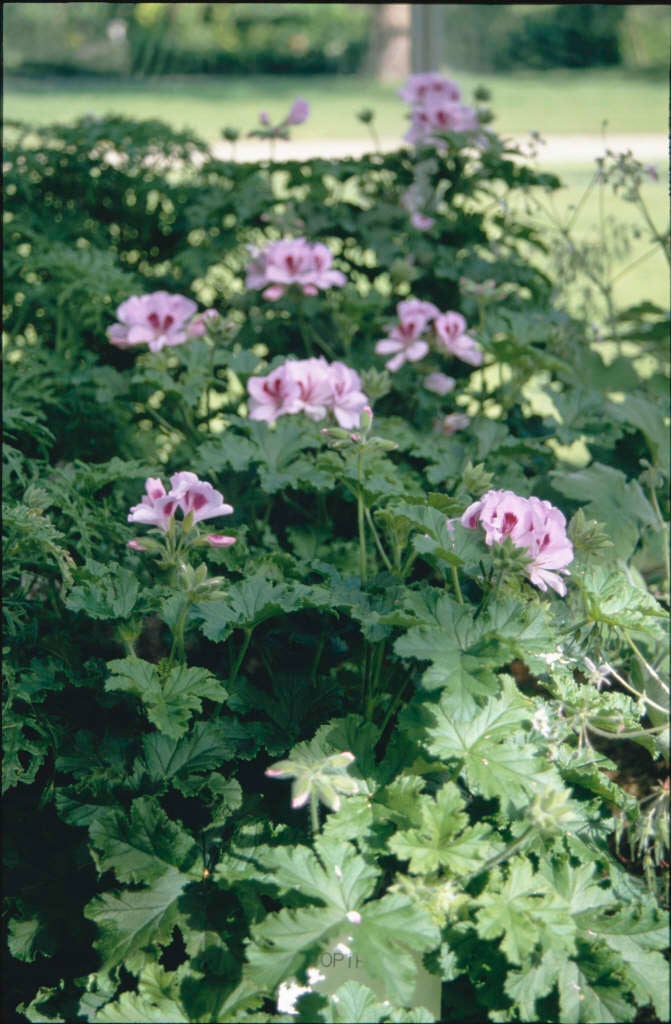Size
Ultimate height
0.1–0.5 metresTime to ultimate height
2–5 yearsUltimate spread
0.1–0.5 metresGrowing conditions
Moisture
Well–drainedpH
Alkaline, NeutralColour & scent
| Stem | Flower | Foliage | Fruit | |
| Spring | Green | |||
|---|---|---|---|---|
| Summer | Purple | Green | ||
| Autumn | Green | |||
| Winter | Green |
Position
- Full sun
Aspect
West–facing or South–facing or East–facing
Exposure
Sheltered Hardiness
H1CBotanical details
- Family
- Geraniaceae
- Native to GB / Ireland
- No
- Foliage
- Evergreen
- Habit
- Bushy
- Genus
Pelargonium can be perennials, sub-shrubs or shrubs, sometimes succulent and mostly evergreen, with palmately lobed or pinnately divided leaves and clusters of slightly irregular, 5-petalled flowers
- Name status
Accepted
- Horticultural Group
- Unique pelargoniums are shrubby perennials with often pungently scented, rounded, lobed or more deeply cut foliage and clusters of single, funnel-shaped white, pink, red, orange or purple flowers to 3cm across
How to grow
Cultivation
Under glass, grow in a peat-free potting compost in full light with shade from hot sun with good ventilation. When in growth water moderately and apply a balanced liquid fertiliser in spring and early summer. A high potash fertiliser should be used when in flower. Water sparingly in winter. Can be grown outside in frost-free areas in a fertile soil. See Pelargonium cultivation for further advice
Propagation
Take softwood cuttings in summer and overwinter plants in frost free conditions or take softwood cuttings in spring
Suggested planting locations and garden types
- City and courtyard gardens
- Coastal
- Cottage and informal garden
- Patio and container plants
- Flower borders and beds
Pruning
Deadhead regularly
Pests
Susceptible to vine weevil, caterpillars and thrips
Diseases
May be susceptible to grey moulds when grown under glass
Get involved
The Royal Horticultural Society is the UK’s leading gardening charity. We aim to enrich everyone’s life through plants, and make the UK a greener and more beautiful place.
